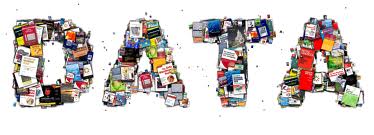Data journalism is the new thing going on in the world of reporting. What is it you ask? Pretty much finding a story from a huge set of statistics or numbers and that is an understatement. Data comes from anywhere and everywhere that it can be found.
Steve Lohr of the New York Times wrote in an article that we are in “The Age of Big Data.” He describes it as a collection of figures, online searches, posts and messages. Think of every Facebook status that you commented on in the past month, every minute an NBA player has played in a game this week and every salary a government worker. Now you have the idea grasped of Data Journalism there is still a few problems: what to do with all of the data and who is going to use all of that data?
You would think that with the term “data journalist”, it is figured out who would exactly be handling all of this but it may prove more complicated than thought. For data journalists, it may be more than just writing an article that sounds like a math test. In this instance, a reporter would have to “show their work” by displaying the data in visual form. The visual form varies between graphs, charts, maps or whatever is needed to display the data properly. These visual tools are what some may refer to as infographics. Considering that quite a few of these infographics are of a digital nature. This means that reporters may need to learn a few more skills in coding to create digital infographics for the audience to understand the information better.
But still one must figure out how the data is used. Its usage is determined by grouping, size, position, angle, color and annotation. Grouping of data refers to measurement by a data point or a time point. An example would be shoplifting crimes during the Winter season. Size refers to the space that data takes up such as how big the graphic actually becomes. It is basically determining what symbol it wants to use for the data. Position represents how we want to look at the data, whether it be by time or value. Angle is where the data becomes connected and trends are found within the information. Color indicates differences within the information. It’s sort of like reporting on a poll and it does not move around any data points. Annotation is basically the labels for the data. So if you’re grouping by time intervals it will name the day, date, or month and week that your information was gathered.
Questions
1. How can data journalism be incorporated in college curriculum?
2. The news has gotten a bad rap for reporting on fluff subjects such as ce;lebrity scandals. Is data journalism a gateway for news to come back to its hard informative nature?
3. What ways do data journalism change the way we prepare future journalists?\
4. Other than hard news, what other type of news can incorporate data journalism? Ex. technology, entertainment, sports
5. what ways can current reporters adapt to data journaslism?


